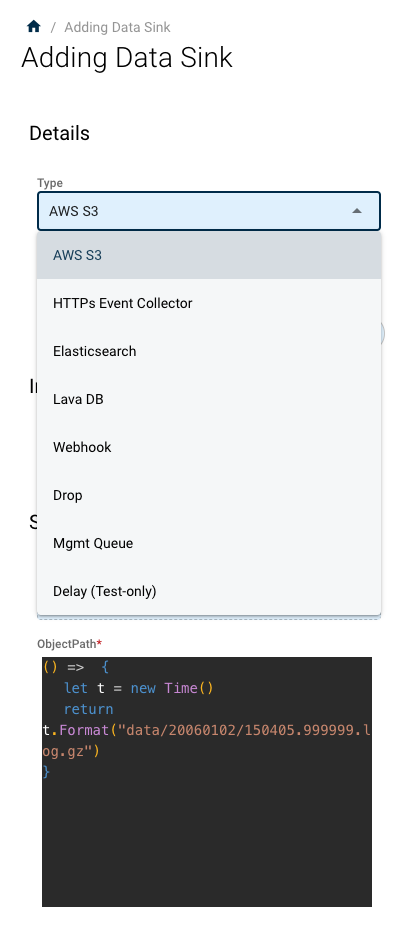Creating the Data Sink
Data sinks are where the data goes when leaving the Platform preprocessor. Each processor in a router can be assigned a sink.
When you click on the Add Sink button, you will notice that a configuration panel will ask for the type of sink you want to create.

Properties Panel: Selecting a Sink
By selecting a type of sink, the option fields change. There is still the name of the pipe in each selection, but the authentication and definition change.
Management Queues
Most data you will want to analyze.
Event Watch
The most common thing you will want to do is send data to the streaming analytics engine called Event Watch.
Queue: queue:LVDBService:FileQueue

Event Watch Funnel In
Often a pipe series will go into a multiple processors that all send their data to Event Watch for analysis.
S3 Bucket
Besides EventWatch, a common sink is the AWS S3 bucket.
HEC
HTTP Event Collector (HEC) lets you send data and application events to a server that uses the HEC protocol. Go into the destination server and create the listener first. When you do that, the server will provide an http URL, token, and connection name. Use these to populate the HEC Sink.
Drop
To discard data, create the Drop bucket. The drop bucket is a discard pipe, which tracks the volume of the discard so that you know how much data is being dropped.
LavaDB
Sometimes you want to place data directly into the database without processing.
Updated 11 months ago
